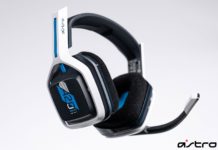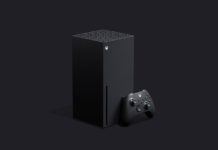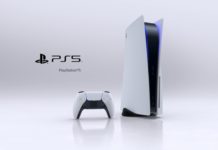Platform: Nintendo Switch (reviewed), PS3, PS2, Xbox 360, etc.
Developer: Namco
Publisher: Bandai Namco
MSRP: $29.99
Introduction
With a ton of NEO-GEO titles and classic NES remakes like Blaster Master Zero, the Switch has proven to be a great place to experience (or revisit) classic games, either out of love or nostalgia. So it’s no surprise that Bandai Namco would release their Namco Museum game for the Nintendo Switch eShop. With 11 classic games, some popular, some obscure, it’s a trip down memory lane, the question is, is it a trip worth taking? Let’s get into it.

Game Selection
It’s no secret that Namco holds a great many classic games under its umbrella, so it’s not surprising that Pac-Man, DigDug, and Galaga are included in Museum, but it’s other eight games that may have some people scratching their heads asking themselves, why? Here’s the full roster of games:
- Pac-Man
- Pac-Man VS.
- DigDug
- Galaga
- Galaga ‘88
- The Tower of Druaga
- SkyKid
- Rolling Thunder
- Rolling Thunder 2
- TankForce
- Splatterhouse
Namco Museum for Switch isn’t the first time Namco’s released an anthology game collection, it’s been done since the original PlayStation. However, instead of rock solid games like Pole Position or Galaxian, Bandai Namco instead replaced them with lesser known titles like SkyKid, Tank Force, and even The Tower of Druaga. This may have been done to mix up the variety, instead of selling the same old game as before, which I admire, it’s just that these newer games aren’t really that great. Tank Force was fun, but only when I played it multiplayer, otherwise it was boring and repetitive.
Rolling Thunder (1 and 2), for me at least, were perhaps some of the better games in the collection. I don’t mean that Pac Man isn’t great, but it’s a game that’s better when looking back (aka nostalgia), where rolling Thunder is a more modern looking title in comparison. Rolling Thunder and its sequel are well-made games that control well, but yet is still challenging.

That all being said, I’m not sure why Bandai Namco feels that the only games they can put into a museum game are from the 16-bit era and earlier (with one exception, which I’ll get to later). It would have been more compelling to see them include a wider variety of titles, with games like the original Ridge Racer and Tekken from ‘93 and ‘94 respectively. The collection, with only 11 games would have had its value skyrocket.
Playability and Options
If there’s one thing that Namco Museum is not lacking it is options. The options and playability are fairly deep, within Namco Museum, when you consider the games they ported onto this collection were primarily arcade games, with a few console titles, that didn’t really have options other than player one or player two. Since many of these games were made for arcade cabinets, that had their monitors in the portrait mode, or vertical mode, when played on the Switch in landscape mode, the sides or empty area of the screen is filled with art that resembles the marquee artwork on the old cabinets. What’s awesome is that the options allow you to rotate the screen 90 degrees (you can do this four times, to go 360 degrees around), thus allowing you to play games like Pac-Man or Galaga in their native, or close to it, format from the arcades.

Another great feature is the option to save a game, no matter where you are, no matter the game. This was incredibly helpful while playing Tank Force, which I had gotten quite far in, but had to leave my house (and couldn’t take the Switch with me), so I saved my progress and came back later.
As for the controllers, you can play in the normal set up or pop the Joy-Cons off and use them freely, split them up for some two player action or use the Pro Controller.
Each of the games within the collection have two game modes, Normal and Challenge, with the exception of Pac-Mac VS. Normal is exactly as it sounds, it’s the game as it was originally released, no extra features or changes. Challenge mode is a tad different. Basically, each game will present you with a challenge to overcome, specific to the game itself (i.e. every game doesn’t feature the same challenge). One specific challenge that I tried was in Galaga, in which you have to allow three of your ships to be hit by the tractor beams of an enemy ship, effectively losing them, then trying to get them back within three minutes. If you can do this, you’ll score and accomplishment will be uploaded to online leaderboards, giving you bragging points to the rest of the world.
The controls are pretty straight forward, with may the “coins” thing being slightly confusing. The joysticks are your primary method of navigating the menus and playing the games, your buttons also work as expected, but it’s the triggers and +/- buttons that may confuse you, at least at first. Keep in mind, many of these games were arcade games, so they are intended to work as if you were inserting coins, so if you the player taps the left shoulder button, you’ll insert a coin, there’s no limit to how many you can insert, which is great, you’ll never run out. If you die and are asked to continue, you’d think you’d tap the right bumper button, but you’d be mistaken. Instead, you hit the +/- key, depending on whether or not you’re playing single-player or multiplayer. The right bumper is reserved for your options, which as you can see, is slightly confusing. Typical the + or – key would be used for such an option, so this feels terribly awkward, but you may get used to it, I, did not.
Visuals
The game looks pretty good, despite being visuals and graphics from the 70’s, 80’s and 90’s, especially in the Switch’s handheld mode. What surprised me was how good the game looked on my 60” Samsung 4K TV. Not only did the gameplay look good, it kept up pace, not lagging or skipping and even the marquee artwork on the sides of many of the games looked pretty clear. Keep in mind, the Switch does not play or output in 4K, so the visuals on my TV are in 1080p but upscaled to 4K.

The menu could be a little more inspired, the 90’s grid look doesn’t feel vintage or nostalgic, it feels dated – like it’s from the wrong decade. It feels like the menu for an original PlayStation game, not something paying homage to games mostly from the 70’s and 80’s. I can’t really pick on too much here, as these visuals have stood the test of time and the developer’s goals weren’t to remaster these games, but to present them as close to the original release form as possible.
Extras
Finally the extra game, which I briefly mentioned before, Pac-Man VS. Pac-Man VS is the only game from a more modern console, the GameCube. Seeing how this version of Museum is on the Switch, it makes sense that Namco includes an exclusive Nintendo game. This game is probably the most fun, in a group setting, as it allows you to connect multiple Joy-Cons, as in up to four. The game is simple, one person controls the iconic Pac-Man, while three other players play the ghosts trying to get him. VS is presented in HD and looks the best out of all the games in the collection.

If you played the original game on the GameCube, you know that it allowed players to connect their GameBoy Advances, so that they each player (or Ghost) couldn’t actually see Pac-Man on Screen. While that’s not possible in this version, you can connect a second Switch, assuming you have one and have one player play Pac-Man on one, while three other players all play Ghosts on the second Switch. It’s not ideal, like the GameBoy solution, but it still sounds fun.
(Note: Since I don’t know anyone else around me with a Switch, I was unable to test this particular feature.)
Conclusion
Namco Museum offers gamers 11 classic games, some newer than others, some better than others. There are great features that make playing some of these older, more difficult games, easier. The ability to rotate the screen, save your progress and play with other people, without having to buy anything else, since the Joy-Cons can be divided up, is a great value. The addition of Pac-Man VS, a newer, more “party friendly” Pac-Mac game is great.
You just need to ask yourself a few questions, am I going to play this game with other people? Am I going to have a lot of people over the house to play these games and will they even be interested in them? How much do I love classic, nostalgia-driven games? It has clean visuals, a few classics, but also a few duds. It also exists in a post-Nintendo Classic world. Granted, NES Classics are hard to find, but when Nintendo offers 30 games, with hardware and a controller, all for $60, is $30 for just 11 games worth it? I think had Bandai Namco included a few games like the aforementioned Ridge Racer and the original Tekken, it would have made the argument a little easier in favor of Namco Museum.
For now, I have a hard time justifying $30 for the package of games you’re receiving. That’s not to say that it’s not a good collection, had it been priced at $14.99, I think it would have been a slam dunk for Bandai Namco, but right now. I just don’t think the value meets the price.









